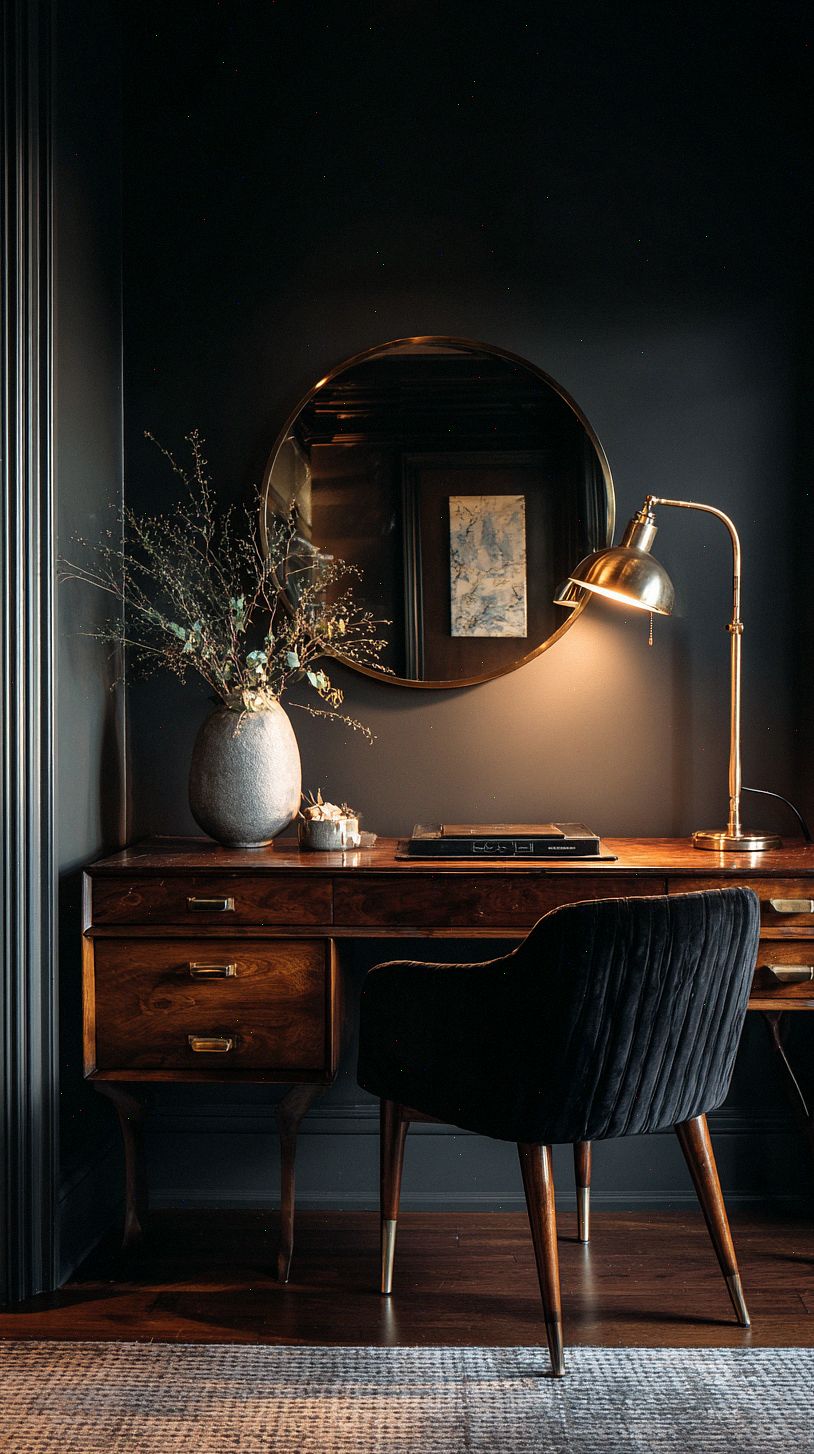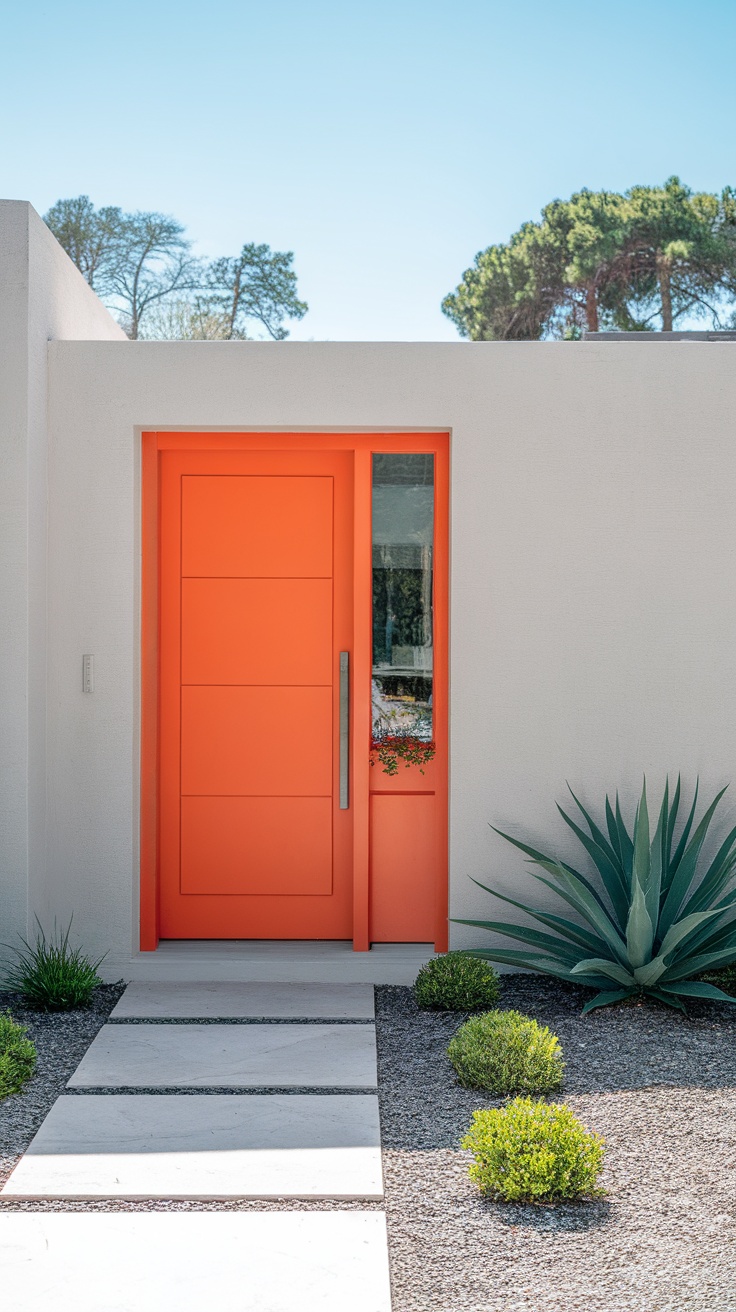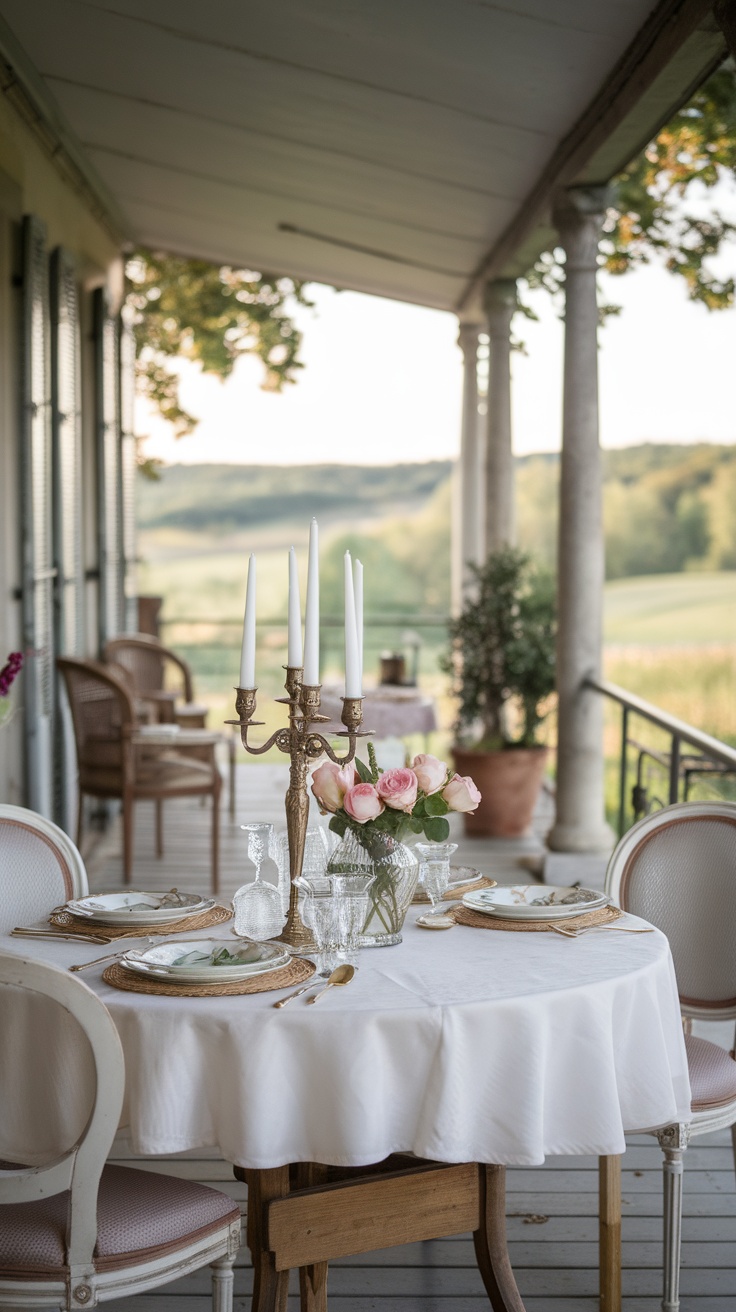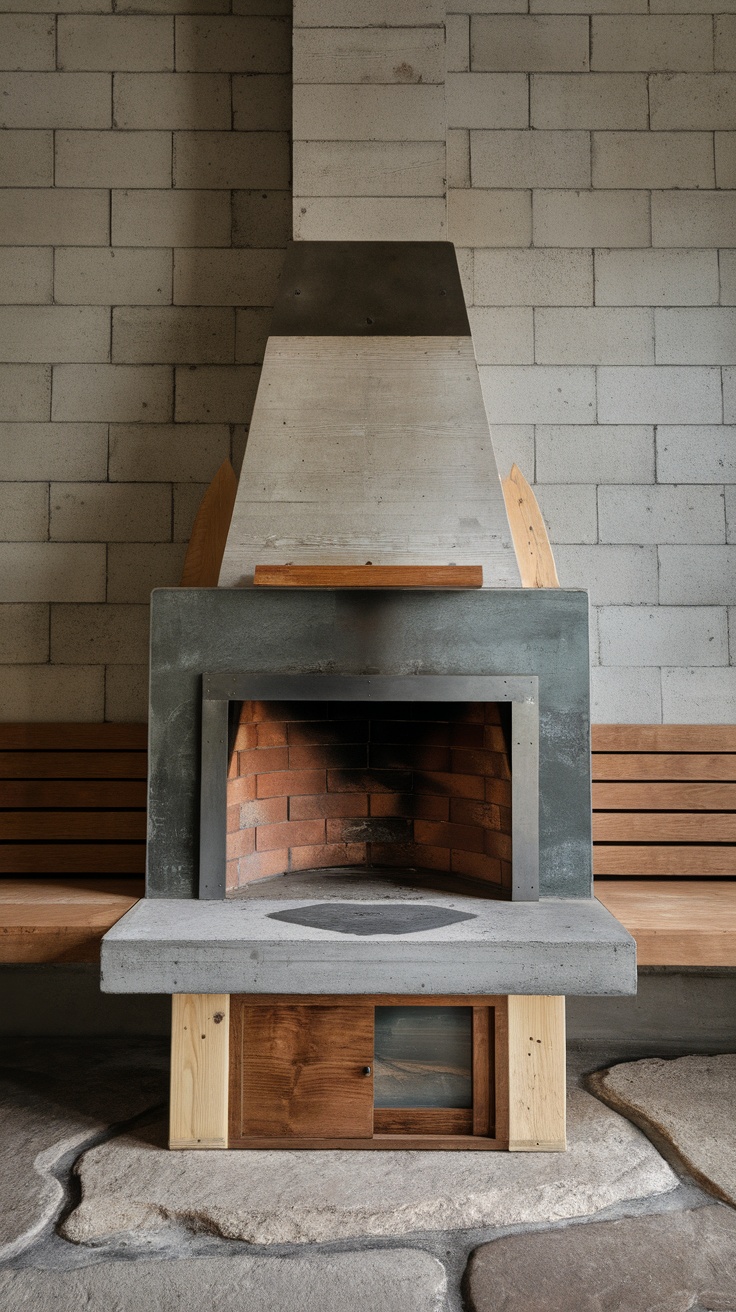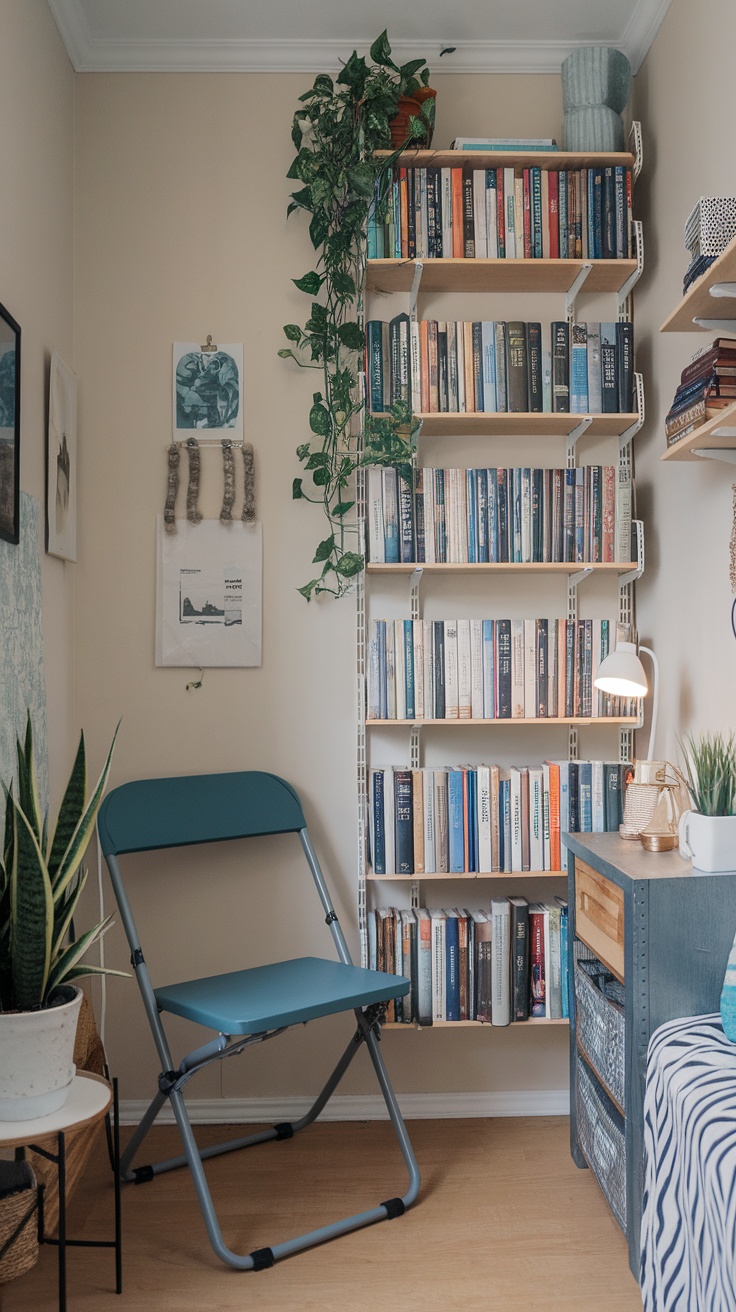How to Create a Moody, Productive Dark Home Office
We’ve all had days when a bright, sterile corner just doesn’t cut it. Designing a dark, moody home office isn’t about making things gloomy , it’s about creating a cocoon that sharpens focus, calms visual noise, and sparks creativity. With deep wall tones, low layered lighting, and tactile accents, we can turn our workspace into something that feels cinematic and surprisingly energizing.
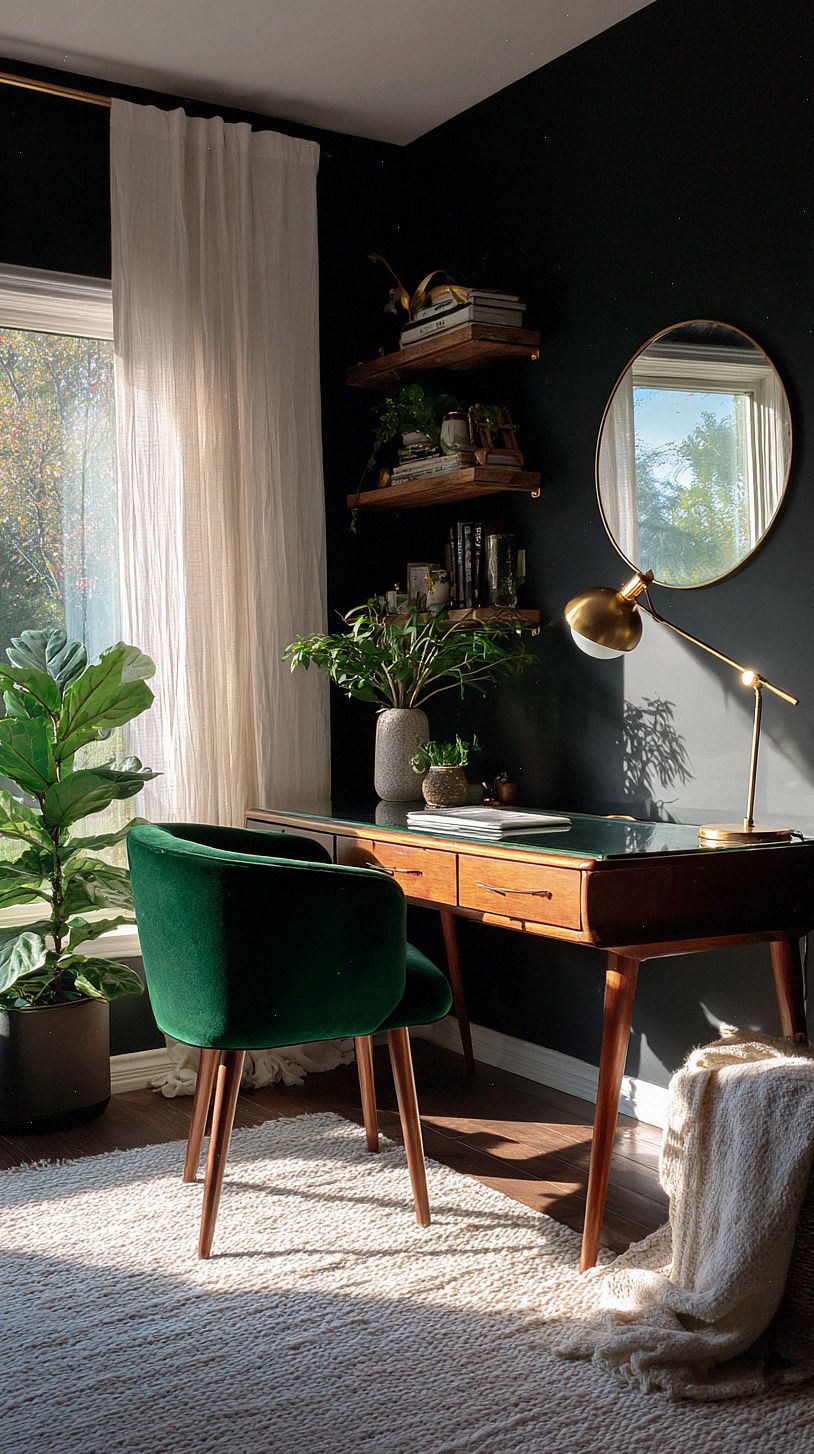
We’ll look at how to balance atmosphere with productivity: choosing rich colors that won’t make us sleepy, lighting that reduces glare and supports our rhythm, clever storage to keep distractions out of sight, and a few tech and styling tricks to keep the space functional. Small, intentional changes can make our office feel personal, grounded, and built for actually getting work done.

Choosing a Dark Paint Palette That Boosts Focus Without Closing In

Pick deep hues that help you focus , think navy, charcoal, or forest green , but favor cool or neutral undertones so the color recedes instead of pressing on you. Test large swatches at different times of day and choose the darkest shade with a slightly higher light reflectance (LRV) than the absolute black; that little extra bounce keeps the room from feeling claustrophobic. Use a lighter ceiling or trim and consider a single accent wall or two-tone scheme to create depth without enclosing the space.

Balance the paint with finishes and lighting: matte walls reduce glare and distractions, while satin trim adds a crisp edge. Layer warm task lighting, indirect ambient light, and reflective surfaces (a glass desk or metallic lamp) so the dark palette feels intentional, not cave-like. Add a plant or wood textures for contrast and warmth that make the room feel grounded and focused.
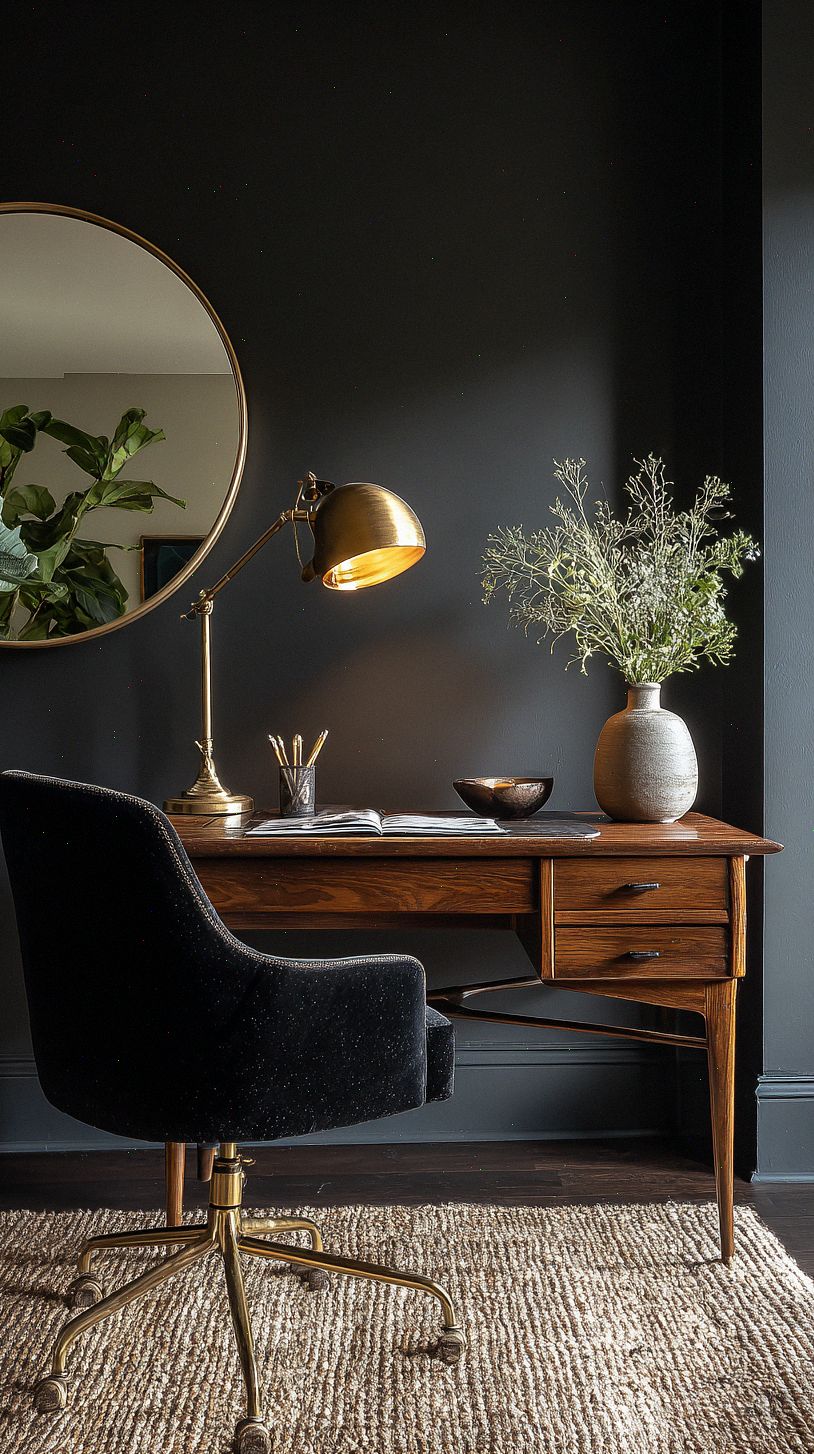
Layering Lighting: How to Balance Ambient, Task, and Accent Light
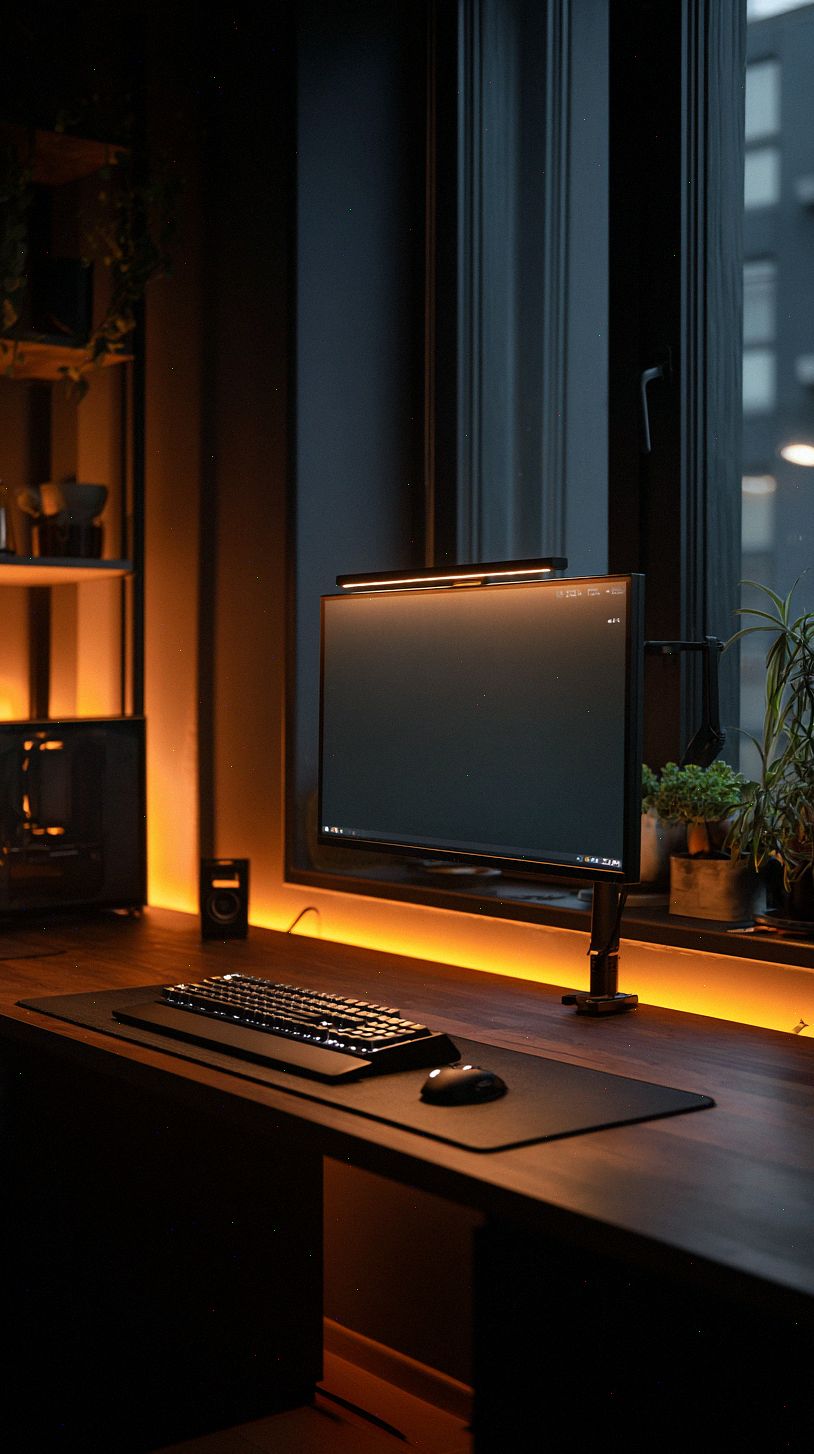
Think of lighting like layers of an outfit: ambient sets the mood, task gives you focus, and accent adds personality. Keep your ambient light low and warm , a dimmable pendant or shaded floor lamp creates that cozy, moody base , then add a bright, adjustable desk lamp aimed at your work surface so you can read and type without eye strain.
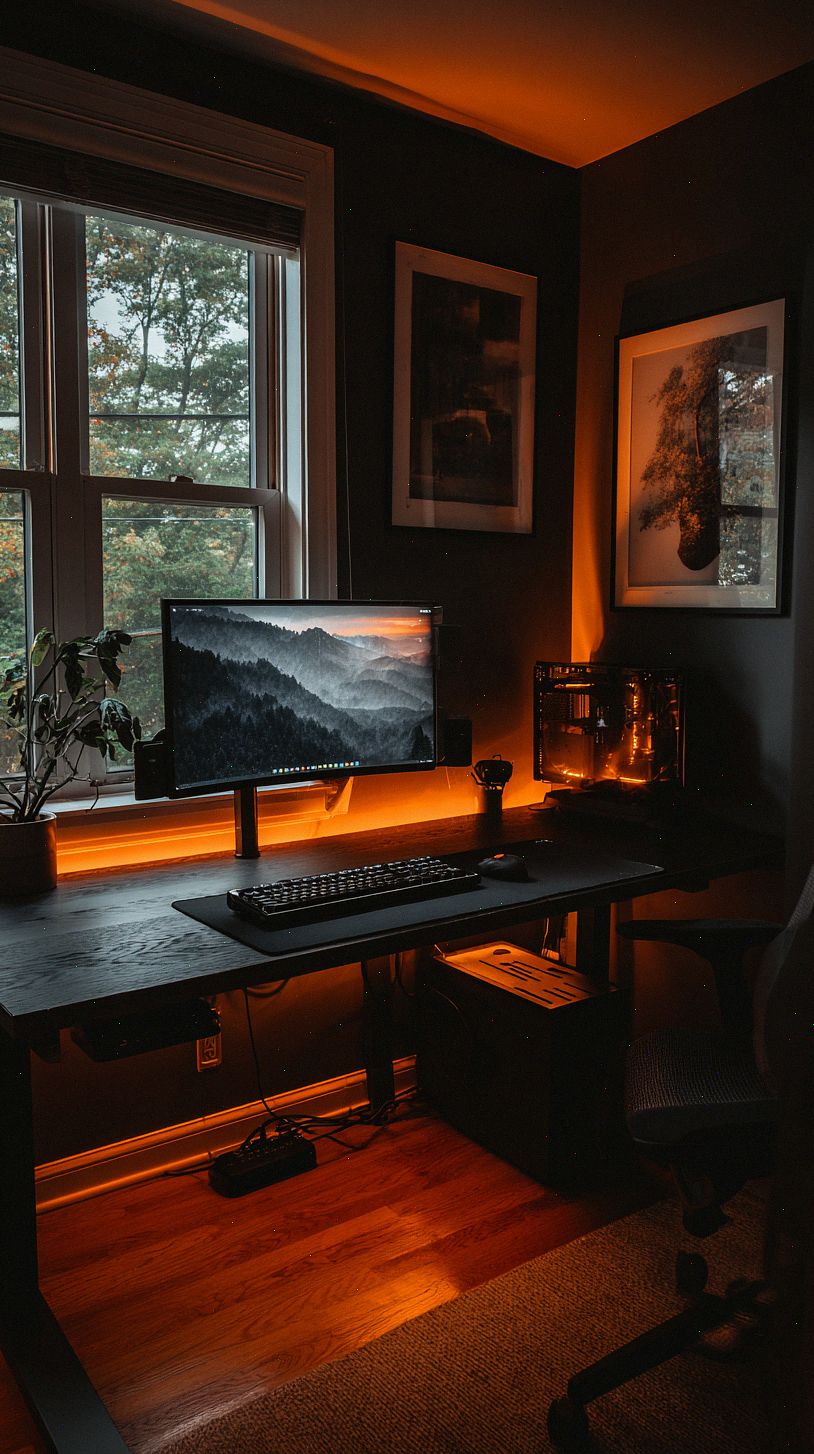
Use accent lights to add depth and draw the eye to art, shelves, or plants; a narrow-beam picture light or under-shelf LED strip can create pockets of interest without breaking the overall darkness. Put everything on dimmers or smart bulbs so you can instantly tune the balance for deep focus or softer creativity, and angle fixtures to avoid glare on screens while preserving rich shadows around the room.
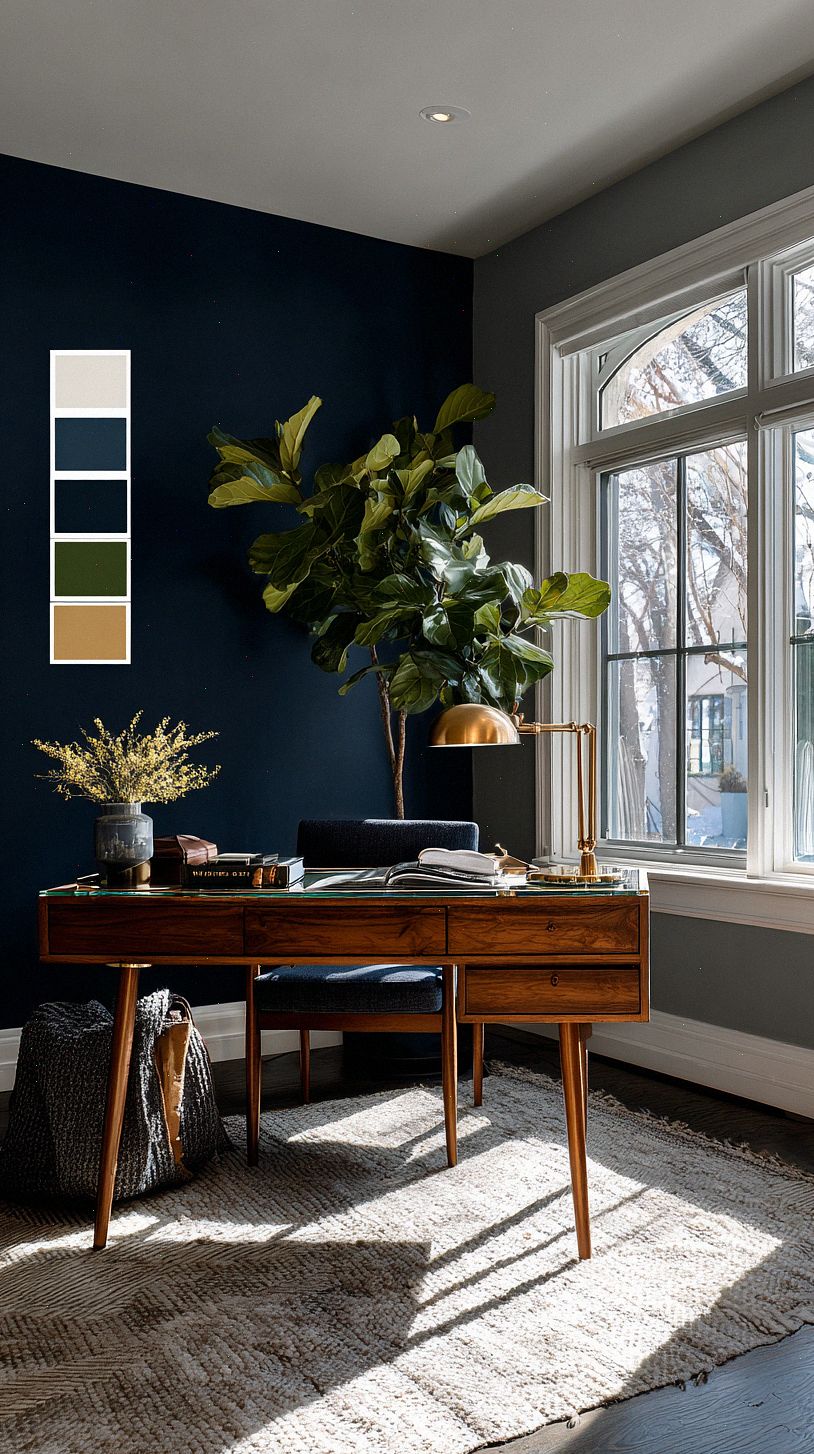
Positioning Desk and Seating for Natural Light and Ergonomic Flow
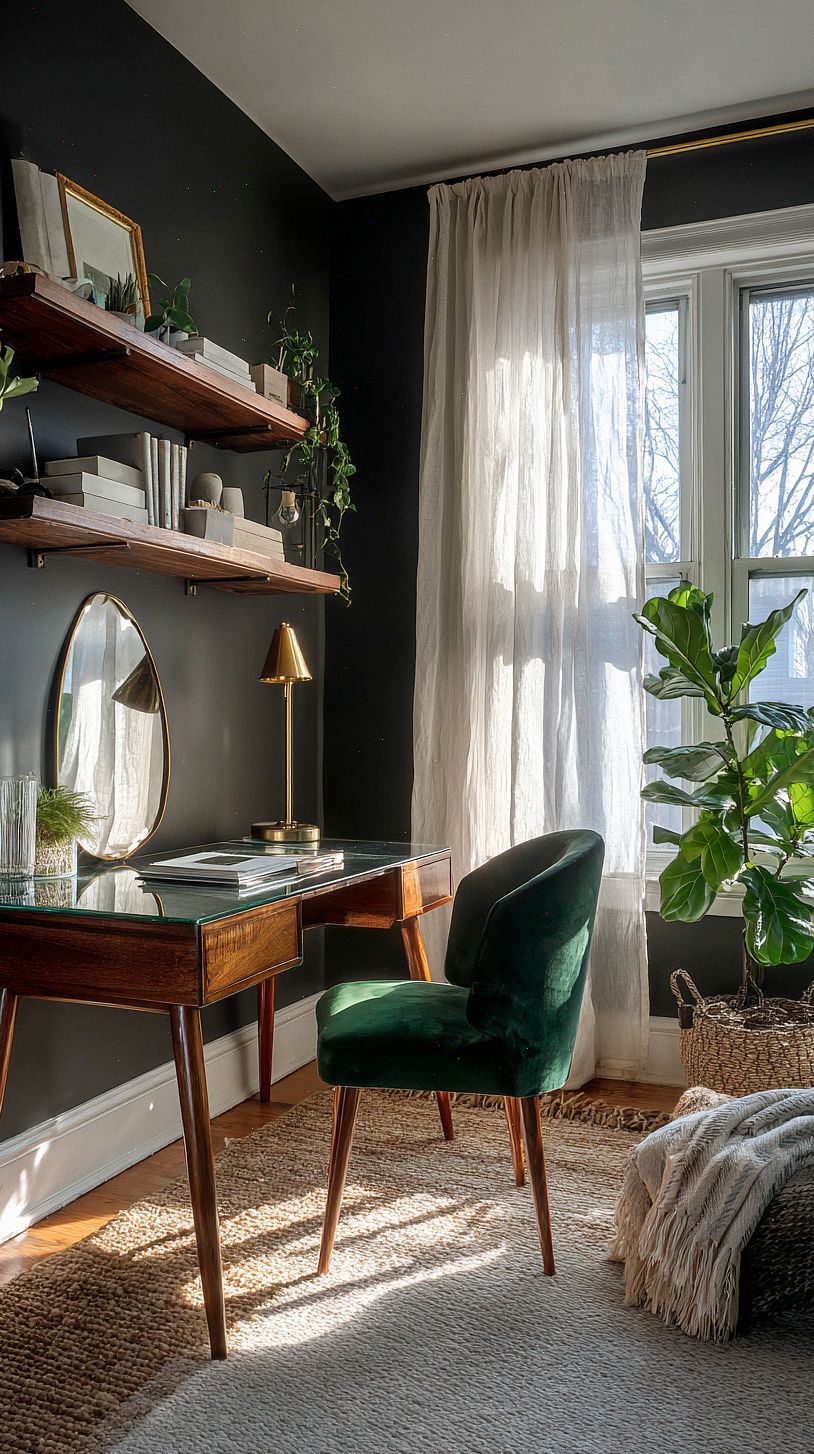
Place your desk so natural light is a friend, not a foe , usually perpendicular to the window so soft side-light illuminates your workspace without blasting your screen. If you prefer facing the view, add low-sheen blinds or a sheer to tame glare; if you do sit with the window behind you, be mindful of reflections on glossy surfaces. Keep your monitor at eye level and about an arm’s length away, and use matte finishes or an anti-glare filter so the moody palette stays rich without distracting shine.
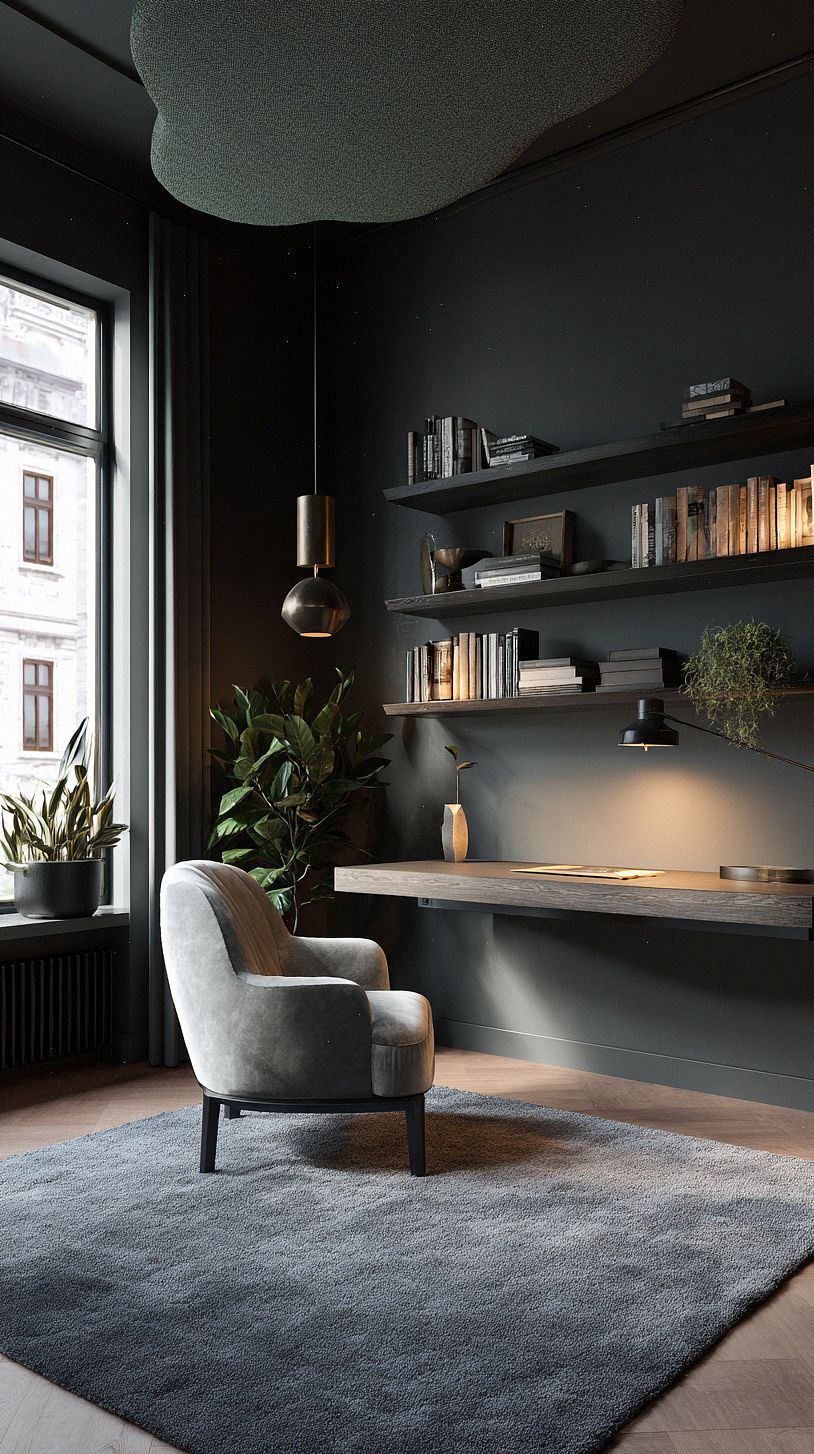
Arrange your seating and circulation so movement feels effortless: a properly adjusted ergonomic chair with feet flat, knees at 90°, and elbows resting at desk height prevents strain, while a clear path behind you allows quick shifts between sitting and standing. Anchor the area with a low-profile rug, tuck cables away, and position frequently used items within easy reach , small tweaks that keep the space feeling intentional, comfortable, and quietly productive even in low light.
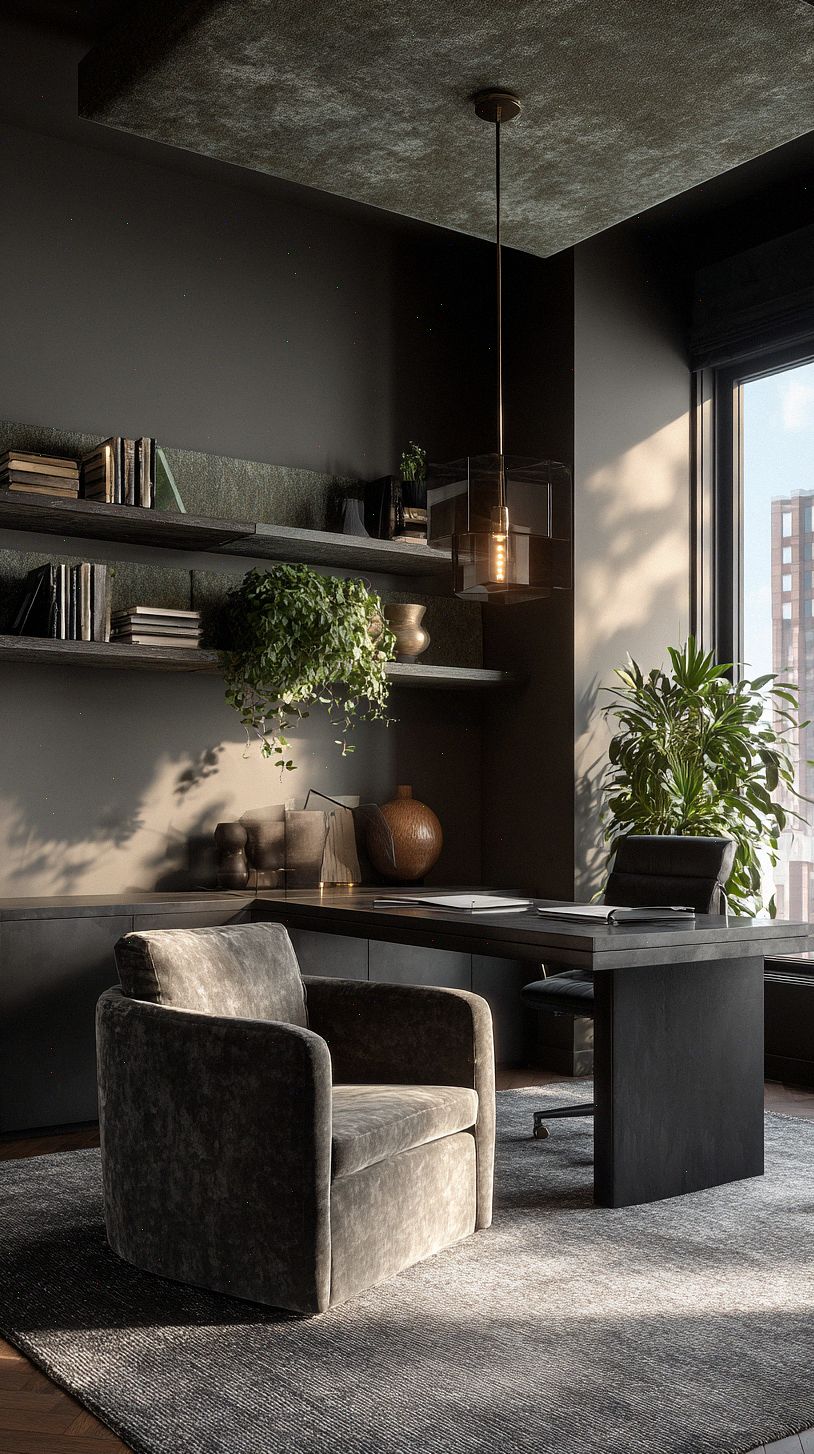
Picking Furniture, Fabrics, and Finishes That Prevent a Cave-Like Feel
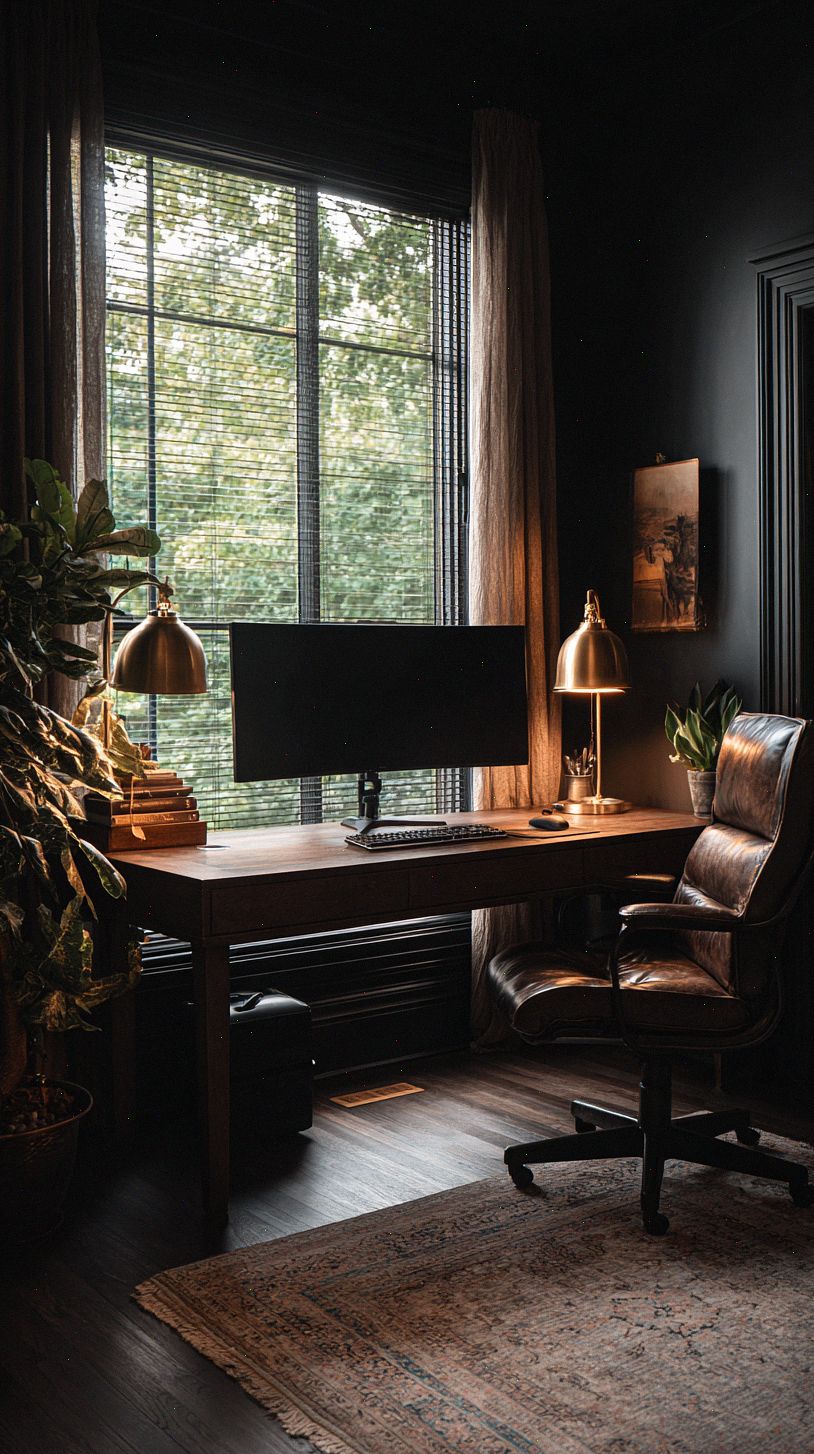
When you’re working with dark walls, choose furniture that breathes,think open-legged desks, glass or acrylic accents, and pieces with exposed wood grain so the room doesn’t feel like it’s closing in. Soften heavy colors with lighter or textured fabrics: a linen curtain, a wool rug, or a boucle throw will catch and diffuse light rather than absorb it, while a jewel-toned velvet chair adds depth without turning the whole room flat and cavernous.
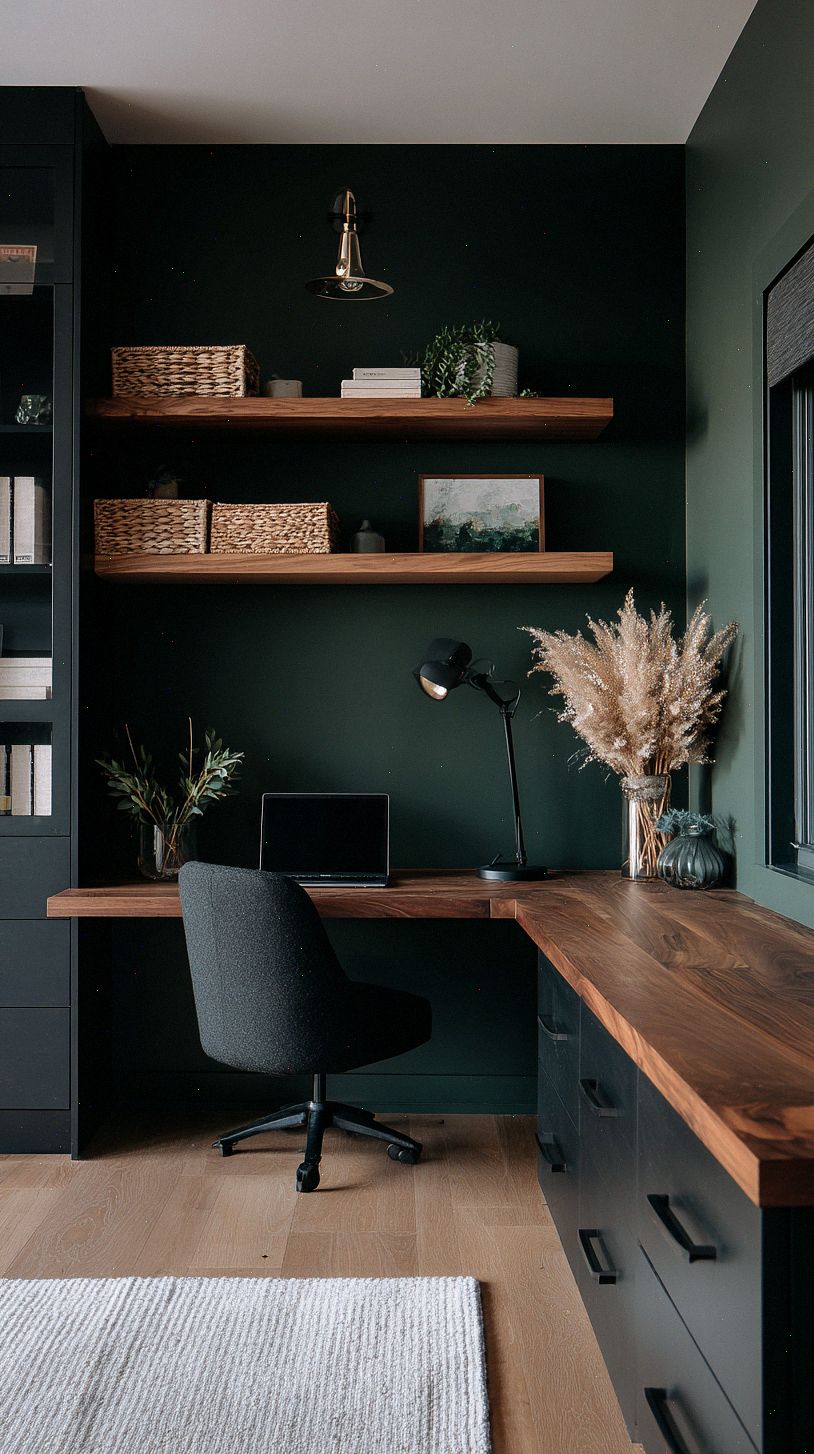
For finishes, aim for contrast and a few reflective touches: warm woods, satin brass, and low-sheen metals lift the mood without high-gloss glare. Use mirrors, glass-fronted storage, and floating shelves to create visual breaks; avoid bulky, floor-to-ceiling dark cabinets that block light. Stick to two or three complementary finishes and introduce plants and natural fibers to keep the space cozy, layered, and distinctly livable,not cave-like.
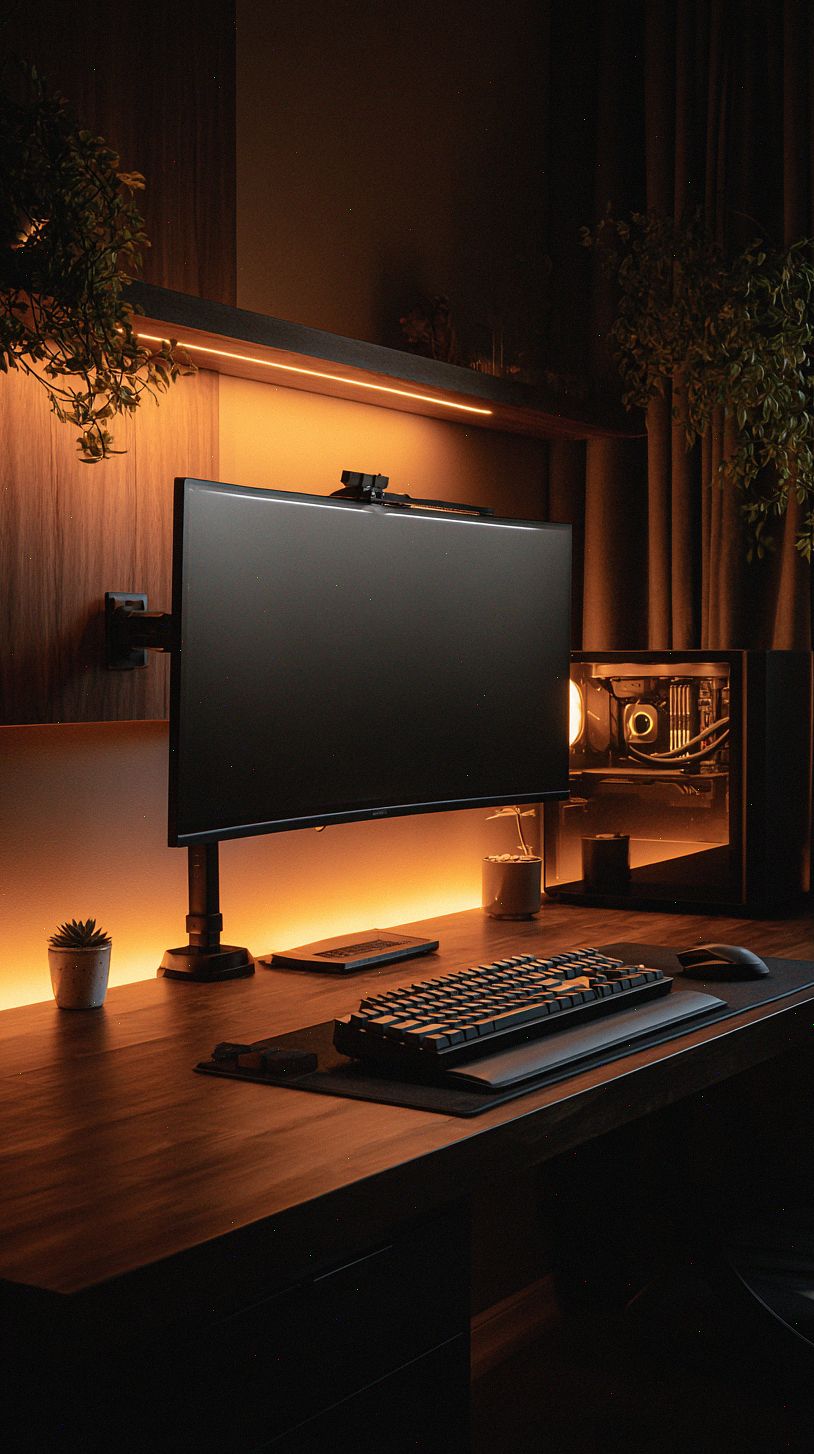
Using Texture, Contrast, and Reflective Surfaces to Add Dimension

Don’t let dark walls swallow the room , you create depth by layering texture and contrast. Pair matte charcoal paint with warm wood grains, a leather desk pad, and a velvet or boucle chair to give your eye places to rest. A woven rug or textured wallpaper adds tactile interest underfoot and keeps the space feeling intentional, while a handful of lighter accents (a cream throw, pale ceramic pot, or soft linen shade) prevents everything from reading flat.
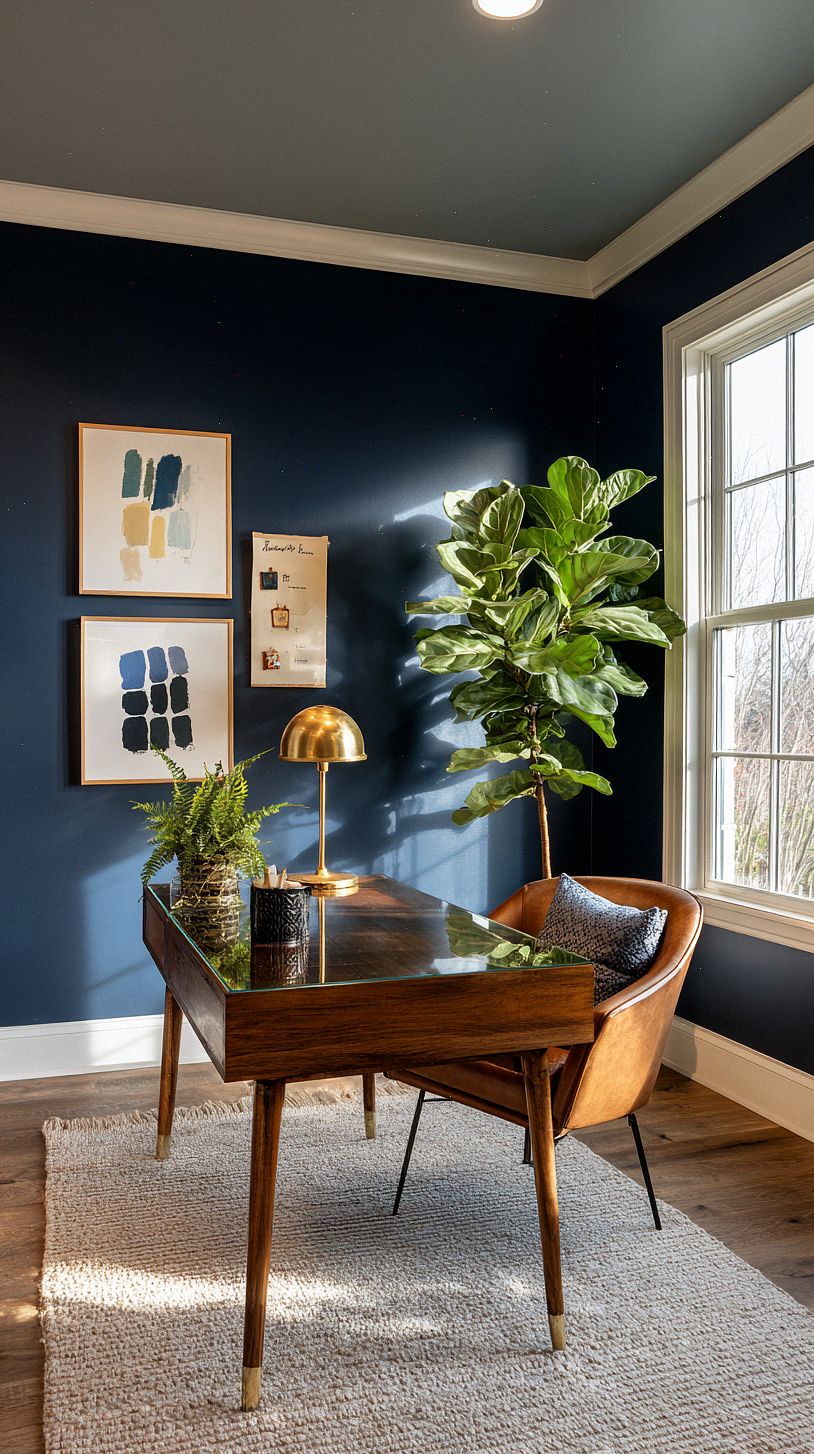
Strategic reflective surfaces give you dimension without brightening the mood too much. Place a round mirror or glass-front frame opposite a lamp to bounce warm task light into shadowed corners, and use small brass or chrome accents to catch the glow. Keep reflections subtle , glossy surfaces on a desk or metallic hardware paired with matte finishes create a sophisticated play of light that feels layered, not glaring.
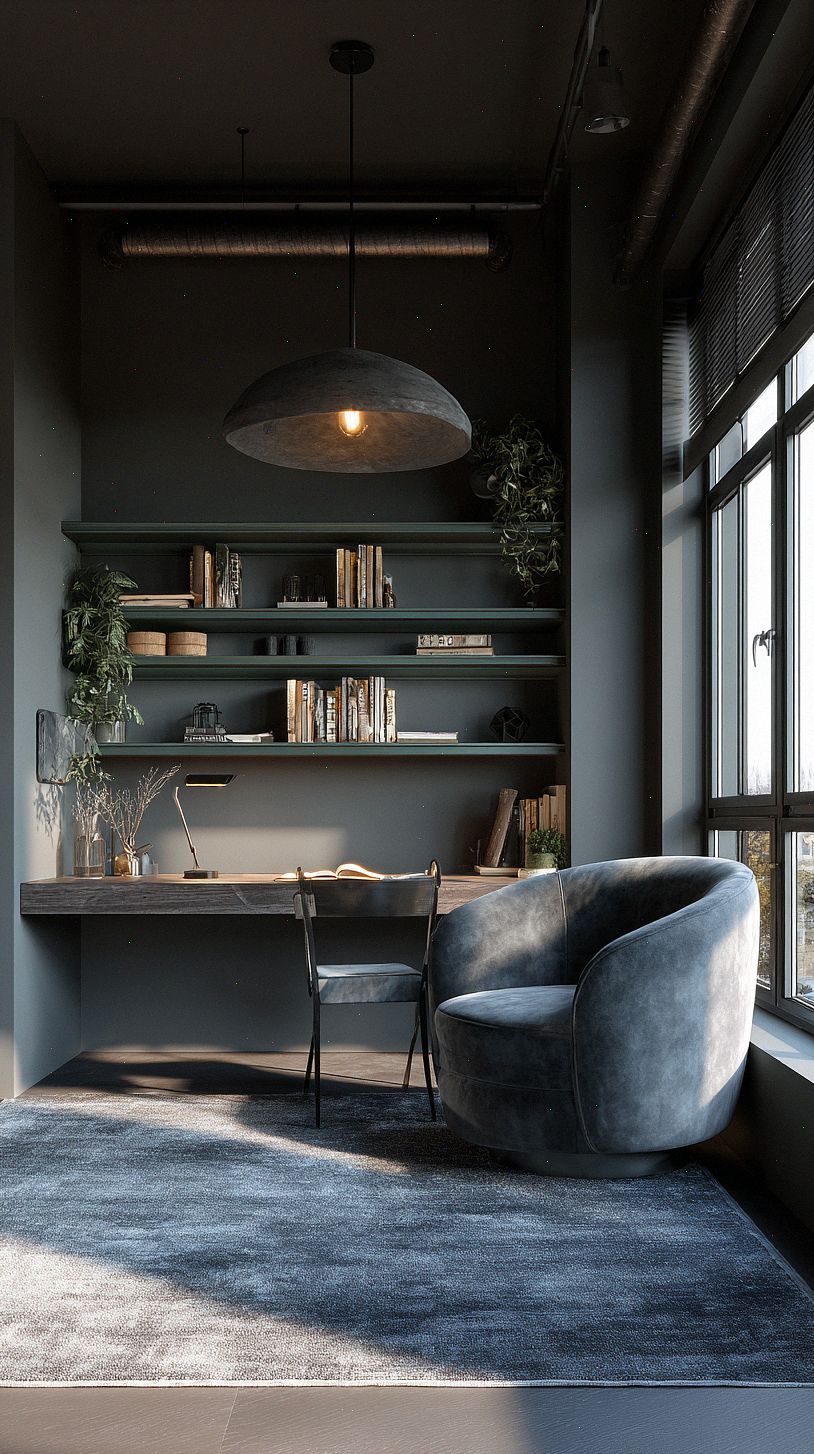
Designing Smart Storage to Hide Clutter and Maximize Surface Space

Pick storage that disappears so your work surface can breathe. Install matte black or deep charcoal closed cabinets and floating shelves with hidden brackets to tuck away paper stacks, chargers, and office supplies. Use under-desk drawers or slim filing cabinets on casters for bulky items, and add sliding panels or pull-out trays to hide everything at a glance , the darker finishes keep the look moody and seamless.

Free up desk real estate by mounting lights and monitors, using a keyboard that stows, and corralling essentials in a low-profile tray or labeled boxes. Conceal cables with raceways or a cable spine, and group loose items in textured baskets on lower shelves so the top of your desk stays a calm, intentional space for focused work.
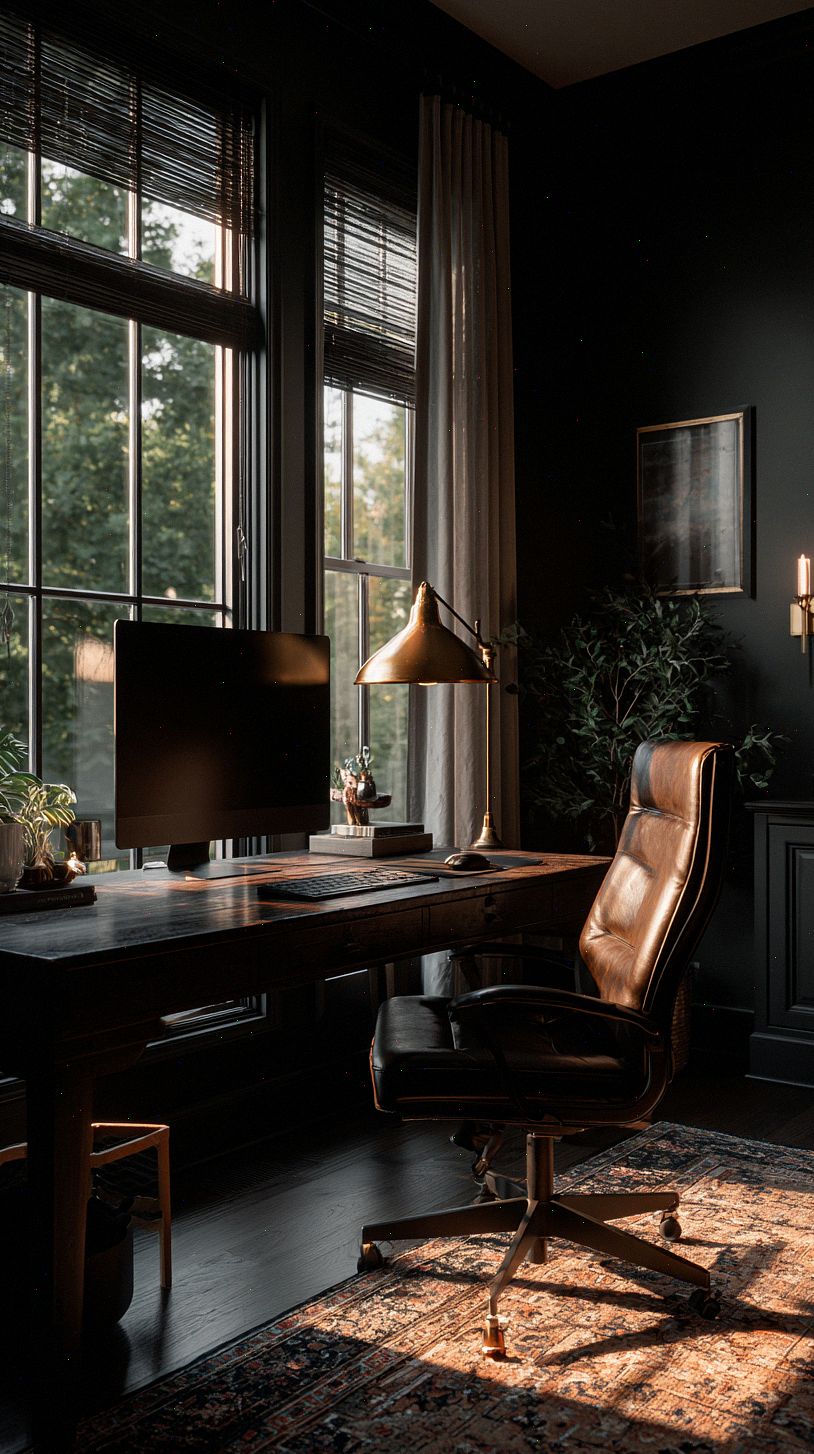
Bringing Life In: Plants, Art, and Metallic Accents for Warmth

Bring in a few easy-care plants,snake plant, ZZ, pothos or a small rubber plant,to add life without demanding bright light or constant fuss. Use varying heights and a trailing vine to soften sharp lines, and pick pots in matte black, deep terracotta or textured ceramic so the greenery pops against moody walls without feeling cluttered.
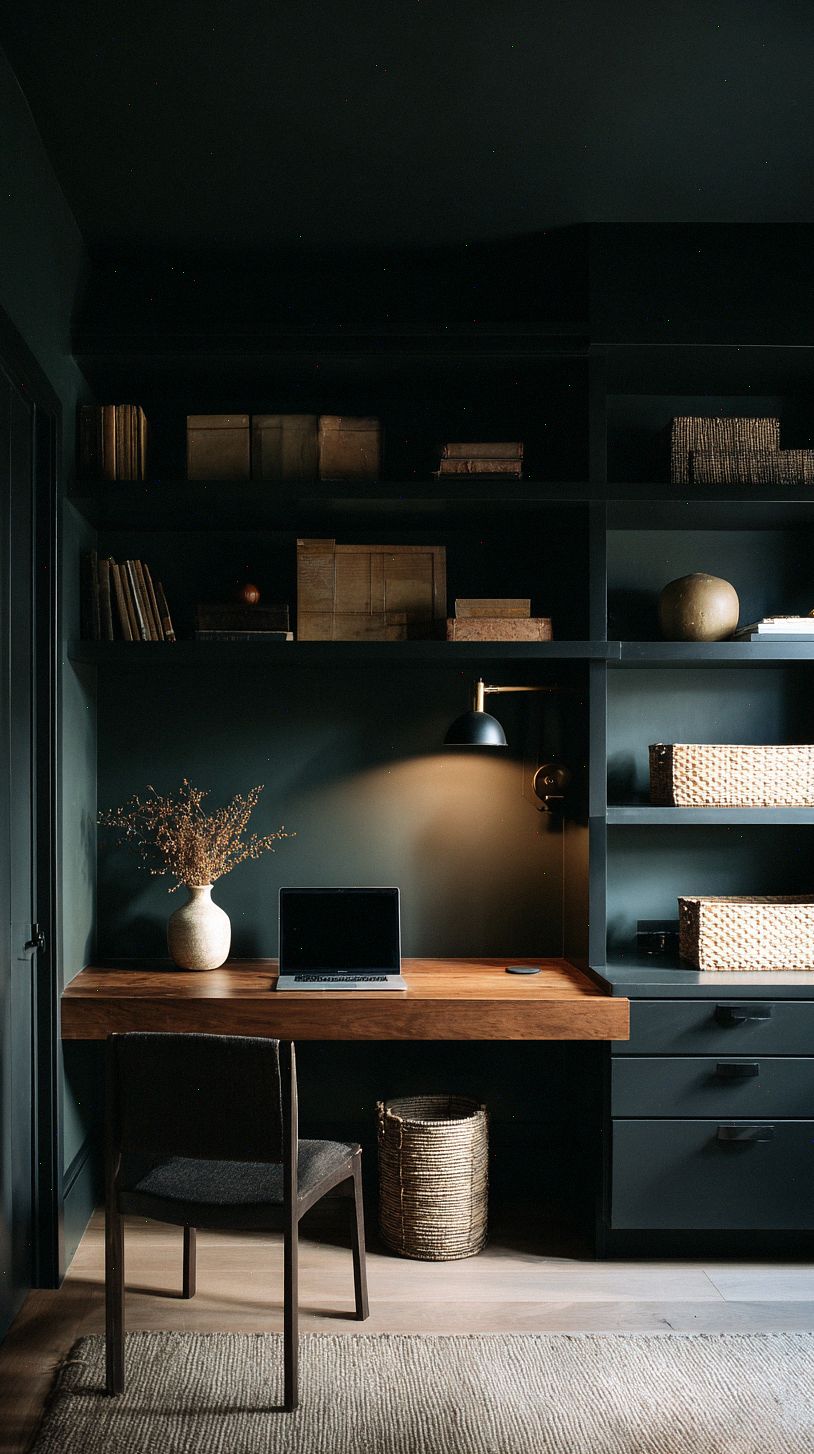
Layer in warm art and metallic touches to bounce and deepen the light: a few framed botanical prints or a textured canvas in rust and ochre, a brass task lamp, copper planters or antique-gold hardware on drawers. Keep most surfaces matte to preserve the moody vibe, then let strategic metallics and a single warm light source create cozy pockets of glow that make the space feel intentional and lived-in.
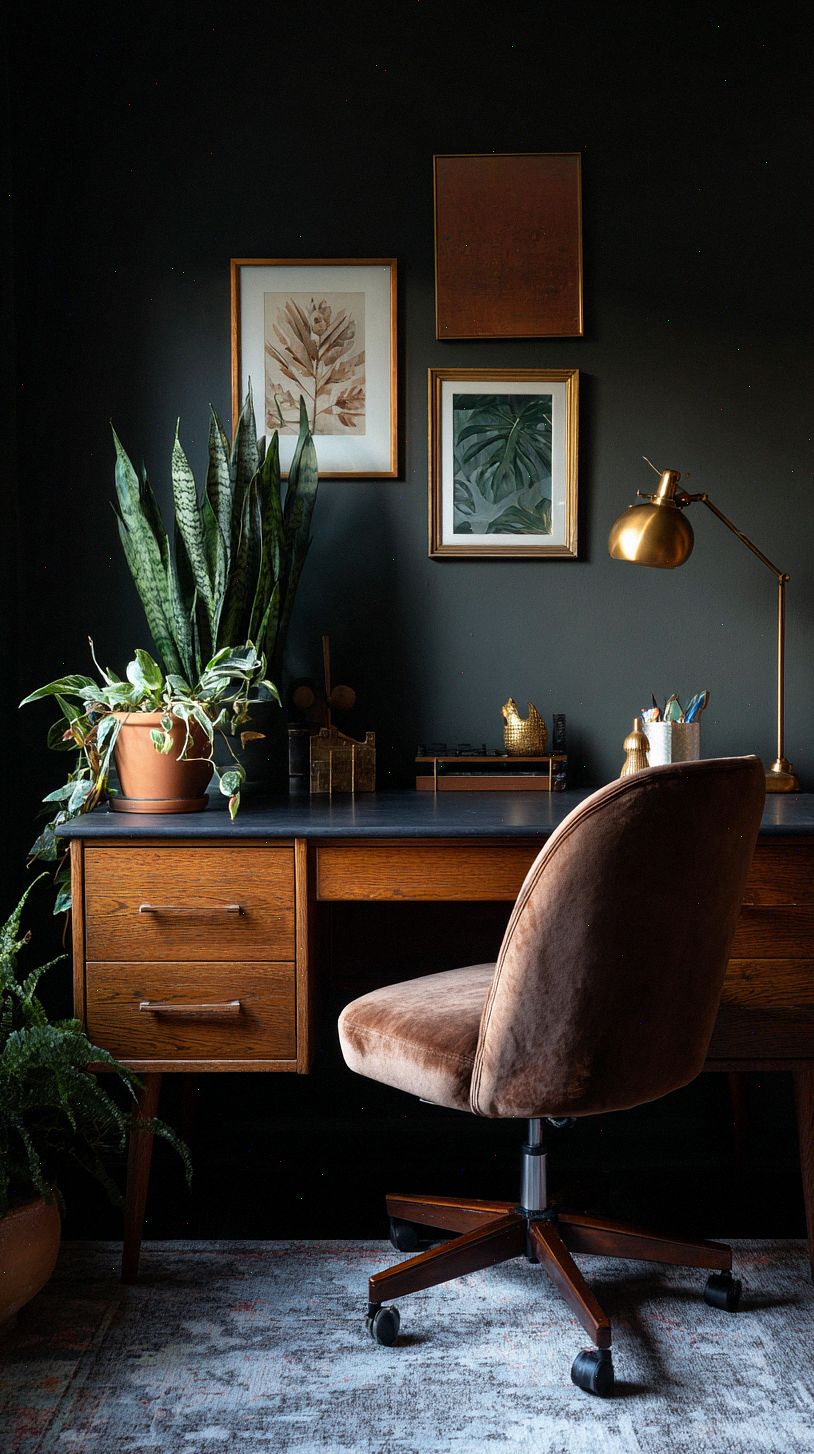
Controlling Acoustics: Rugs, Panels, and Layout Tricks for Quiet
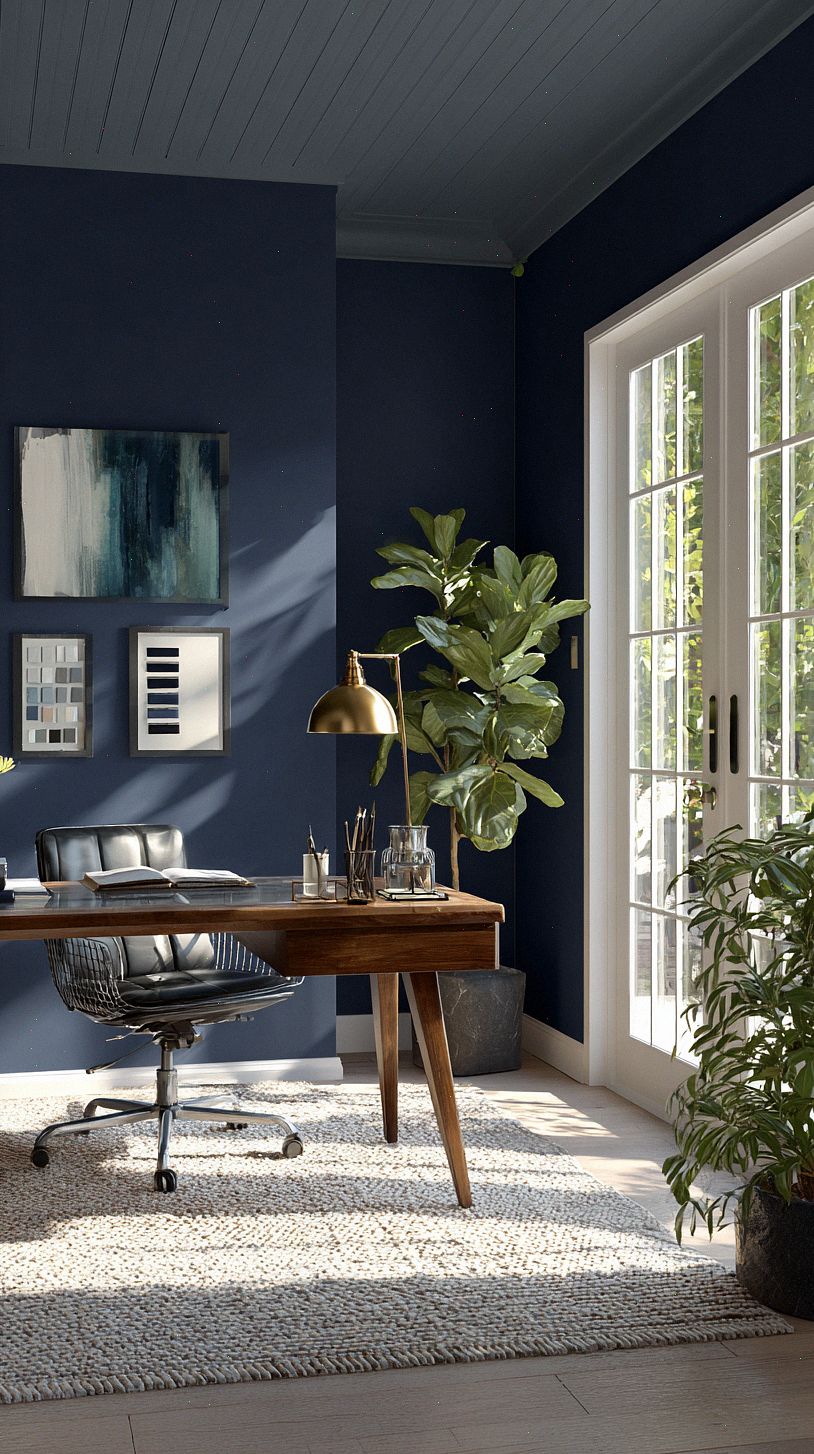
Soft textiles are your first line of defense , a deep, plush area rug with a dense underlay not only anchors the dark palette but soaks up foot and chair noise, keeping conference calls crisp and your focus intact. Layer a smaller patterned rug or runner for visual depth and tuck a felt pad under your desk chair so rolling chairs don’t scrape the floor or break the room’s hush.
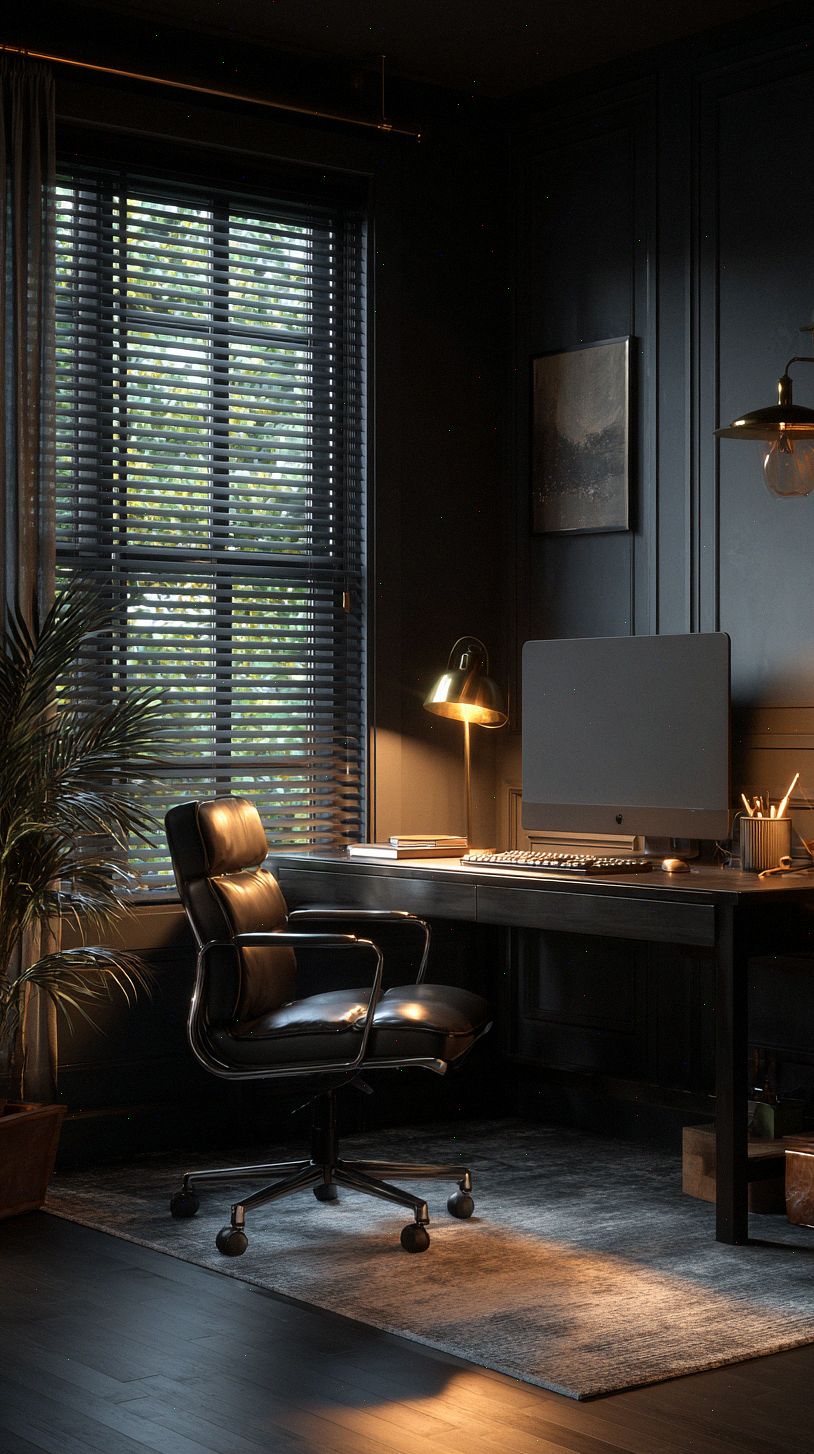
Add fabric-wrapped acoustic panels in matte charcoal or forest green behind your monitor and on the wall opposite windows, and consider a ceiling “cloud” or hanging baffles if you get a lot of echo. Use bookcases, soft curtains, potted plants, and strategically placed lamps as diffusers , arrange your desk away from bare corners and reflective surfaces to keep sound, and mood, perfectly controlled.
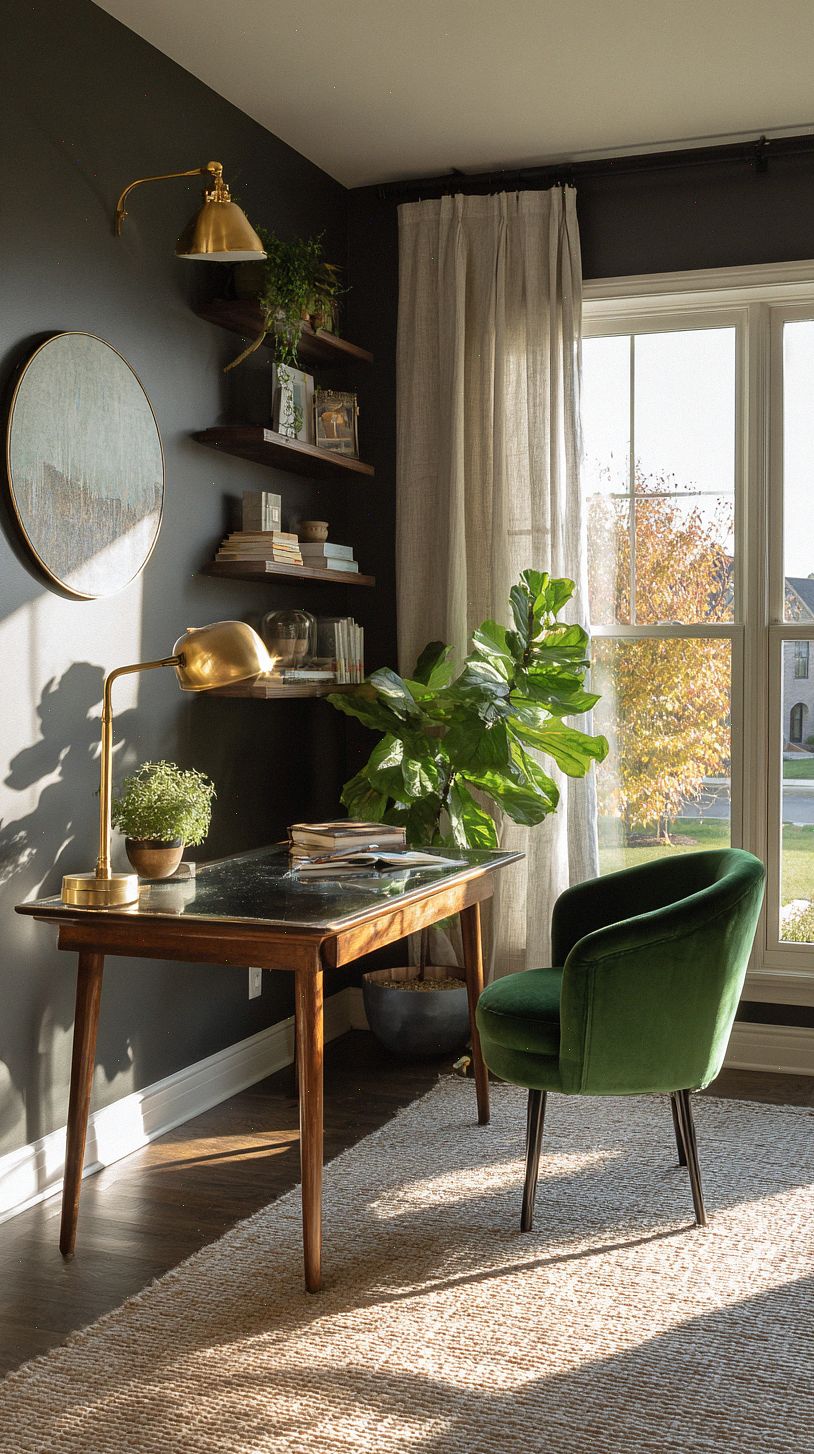
Managing Cables, Tech, and Monitor Setup for Peak Productivity
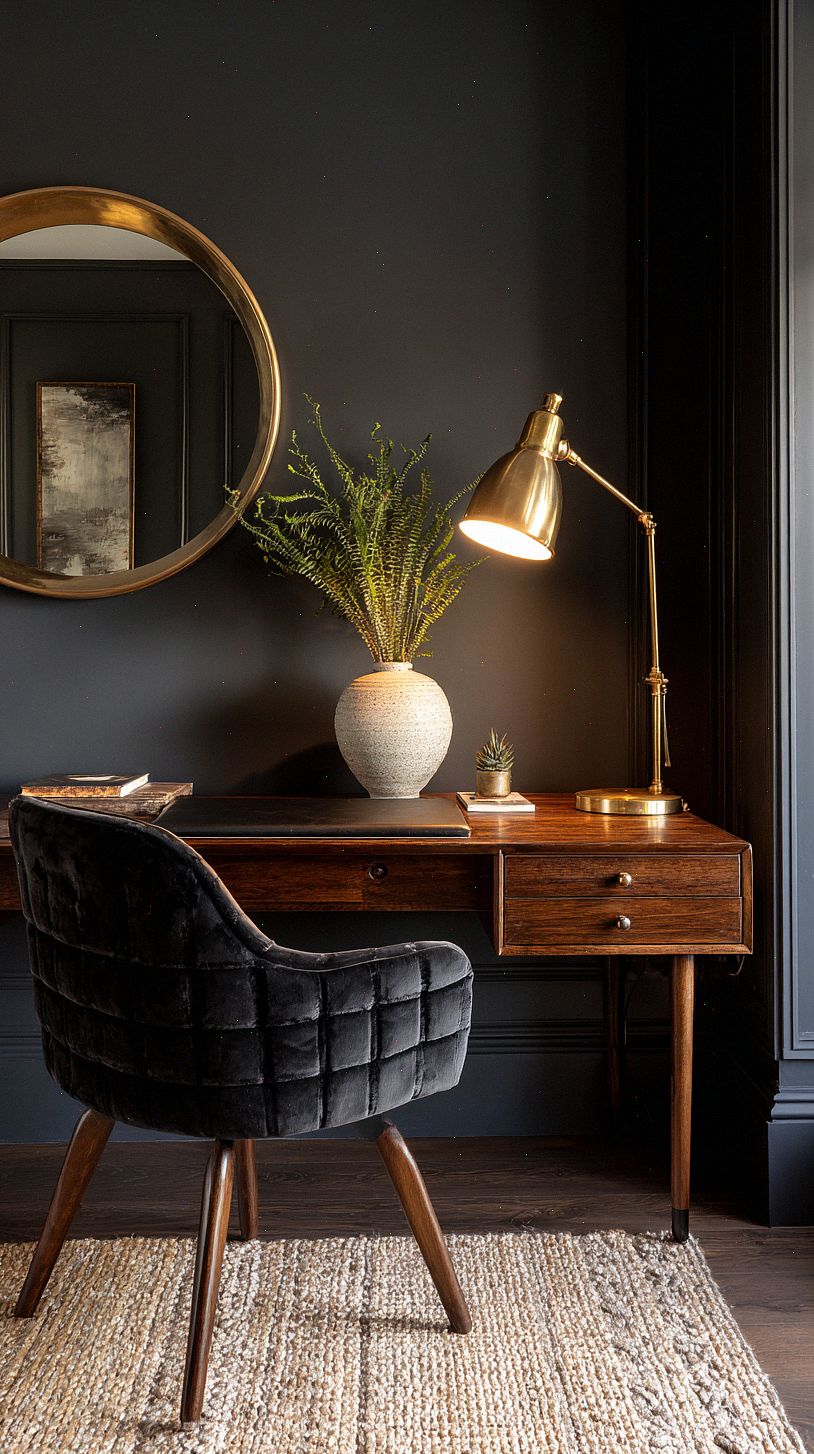
Keep cables out of sight so your dark, moody vibe actually stays moody and not messy. Run a slim under-desk tray or adhesive cable channels along the back edge, use matte-black braided cables and Velcro ties, and route power to a low-profile surge strip tucked under the desk. Go wireless where it makes sense,keyboard, mouse, and headphones cut clutter instantly,while a single docking hub keeps laptop power and one tidy cable hidden behind the monitor.

Set your monitor at eye level with an adjustable arm to open up desk space and reduce neck strain; if you use dual screens, choose thin-bezel models and angle them to form a gentle curve around your line of sight. Add dimmable bias lighting behind the monitor in warm amber or deep blue to reduce eye fatigue and keep the room cozy without washing out your screen, and keep essential tech like an external SSD or hub inside a small drawer or matte organizer for a streamlined, focused setup.
